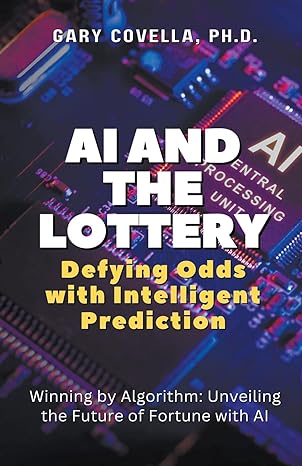Program 2 The purpose of this program is to introduce how limits, which you will see in calculus and work with analytically, can be calculated numerically. This also exercises creating computational Python programs. You are to write a program that produces several evaluations. Later in the course, we will see other ways of doing this more efficiently, but for now, you should perform these evaluations by simply creating a sequence of print statements that output the desired numbers Certain functions might be difficult to evaluate at particular values, where infinity or division by O are involved, but could be understood by evaluating them at a number of values that approach O or approach infinity. You are going to investigate three of these. importont: You are to think about each of these briefy, and guess whot they will come to, before writing your codel There is no penalty for wrong guesses You should write a program that, for each of these functions a) First prints out a line of text at the beginning, stating what is being shown in the following lines a. eg.printing "This shows the evaluation of 5 x/x-21 evaluated close to x-1 Next, prints out a line of text saying what you are guessing the final value you calculate will come to. There is not a wrong answer here as long as you make a guess- the point is to get you to think about the value first, and then see whether your guess was dlose or not. b) a. e g printing "my guess is -3.0 )Finally, prints out a sequence of 7 numbers, representing evaluating the function at 8 different a. eg.evaluating 5*x/-2) at 1.1, 1.01, 1.001,-1.00000001 and outputting results would values. -5.101010101010101 -5.010010010010008 -5,001000100010001 -5.0001000010000105 -5.00001000001 -50000010000001005 5.0000001 b. Notice that the evaluation gets closer and closer to-5, in this case.1 Function 1: The function )is not defined at the value 0, since sin/Q) is 0, and thus it would be evaluating O/o a) You are to show calculations for the values of fix) for values of x ranging from 1 to 10 b) You should show the evaluation by successive evaluations of 1/10 of the previous value. That is first show the value for sin(11/1, then sin(o.1)/0.1, etc. Function 2. The function g)-1-os* is not defined at the value Q, since cosjo is 1, and thus it woud be evaluating to O/D. a) You are to show calculations for the values of gx) for values of x ranging from 1 to 10 b) You should show the evaluation by successive evaluations of 1/10 of the previous value. Function 3.- The function h) infinity (1+3) cannot be directly evaluated at infinity. Because, well,it's a) You are to show calculations for the values of hlx) for values of x ranging from 1 to 10 b) You should show the evaluation by successive evaluations of 10 times the previous value. Le evaluate at values of 1, 10, 100, etc. Program 2 The purpose of this program is to introduce how limits, which you will see in calculus and work with analytically, can be calculated numerically. This also exercises creating computational Python programs. You are to write a program that produces several evaluations. Later in the course, we will see other ways of doing this more efficiently, but for now, you should perform these evaluations by simply creating a sequence of print statements that output the desired numbers Certain functions might be difficult to evaluate at particular values, where infinity or division by O are involved, but could be understood by evaluating them at a number of values that approach O or approach infinity. You are going to investigate three of these. importont: You are to think about each of these briefy, and guess whot they will come to, before writing your codel There is no penalty for wrong guesses You should write a program that, for each of these functions a) First prints out a line of text at the beginning, stating what is being shown in the following lines a. eg.printing "This shows the evaluation of 5 x/x-21 evaluated close to x-1 Next, prints out a line of text saying what you are guessing the final value you calculate will come to. There is not a wrong answer here as long as you make a guess- the point is to get you to think about the value first, and then see whether your guess was dlose or not. b) a. e g printing "my guess is -3.0 )Finally, prints out a sequence of 7 numbers, representing evaluating the function at 8 different a. eg.evaluating 5*x/-2) at 1.1, 1.01, 1.001,-1.00000001 and outputting results would values. -5.101010101010101 -5.010010010010008 -5,001000100010001 -5.0001000010000105 -5.00001000001 -50000010000001005 5.0000001 b. Notice that the evaluation gets closer and closer to-5, in this case.1 Function 1: The function )is not defined at the value 0, since sin/Q) is 0, and thus it would be evaluating O/o a) You are to show calculations for the values of fix) for values of x ranging from 1 to 10 b) You should show the evaluation by successive evaluations of 1/10 of the previous value. That is first show the value for sin(11/1, then sin(o.1)/0.1, etc. Function 2. The function g)-1-os* is not defined at the value Q, since cosjo is 1, and thus it woud be evaluating to O/D. a) You are to show calculations for the values of gx) for values of x ranging from 1 to 10 b) You should show the evaluation by successive evaluations of 1/10 of the previous value. Function 3.- The function h) infinity (1+3) cannot be directly evaluated at infinity. Because, well,it's a) You are to show calculations for the values of hlx) for values of x ranging from 1 to 10 b) You should show the evaluation by successive evaluations of 10 times the previous value. Le evaluate at values of 1, 10, 100, etc







